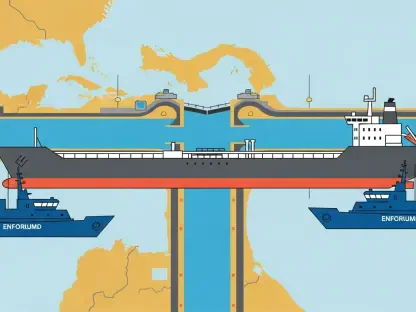In a striking development off the coast of New Jersey, a major renewable energy initiative faces an uncertain future as federal opposition mounts against the Atlantic Shores offshore wind project. This ambitious endeavor, a collaboration between EDF Renewables and Shell, sought to install up to 197 turbines as close as 8.7 miles from Long Beach Island and Brigantine, promising a substantial 2,800 megawatts of power. Such capacity could significantly bolster energy supplies for coastal urban centers and data hubs. However, the project has become a flashpoint in a broader national debate over offshore wind development. With the Trump administration taking decisive steps to halt progress, alongside fierce resistance from local communities and other stakeholders, the clash encapsulates the tension between clean energy goals and localized concerns. This unfolding story reveals deep divisions over how the nation should balance environmental imperatives with economic and security priorities.
Federal Pushback Against Offshore Wind
The Trump administration has emerged as a formidable barrier to offshore wind projects, including Atlantic Shores, by actively seeking to dismantle approvals granted under previous leadership. This stance aligns with a broader policy of skepticism toward renewable energy initiatives of this nature, often citing risks to national security, marine ecosystems, and local economies as justification. For instance, actions like temporary stop-work orders on other projects, such as Ørsted’s Revolution Wind off southern New England, reflect a consistent pattern of intervention. Although a federal court permitted Revolution Wind to continue due to its advanced stage of completion, the initial halt sent a clear signal of intent. Similarly, efforts to shutter the 810-MW Empire Wind project off New York faced reversal only after intense negotiations with state officials. These examples underscore a federal preference for curtailing such developments, placing projects like Atlantic Shores under intense scrutiny and creating an uphill battle for proponents of offshore wind energy.
Beyond specific project interventions, the administration’s approach has emboldened critics who argue that offshore wind poses unacceptable risks. Lawmakers like Rep. Jeff Van Drew of New Jersey have urged further examination of potential issues, such as radar interference and electromagnetic effects on sonar systems, which could impact military and commercial operations. These concerns amplify the narrative that offshore wind farms might jeopardize more than they benefit, particularly in times of potential conflict. The Justice Department’s recent motion to remand prior approvals for Atlantic Shores by the Bureau of Ocean Energy Management exemplifies this aggressive posture. Hailed by opponents as an acknowledgment of legal shortcomings in the initial permitting process, this action could set a precedent for undoing other similar approvals. The cumulative effect is a chilling environment for renewable energy developers who must navigate a landscape of federal hostility and policy uncertainty.
Local Resistance and Legal Challenges
On the ground, opposition to the Atlantic Shores project has been vociferous, driven by a coalition of seaside homeowners, businesses, and environmental activists. Groups such as Save LBI have taken a leading role in challenging the initiative through legal avenues, filing a lawsuit in the U.S. District Court for the District of Columbia. Their arguments center on a range of issues, from alleged deficiencies in data supporting the project to detrimental impacts on marine mammals, tourism, and local economies. Additional concerns include rising electric rates and insufficient evaluation of the broader cumulative effects of offshore wind development along the coast. This legal push gained significant momentum when the Justice Department intervened with a motion to reconsider the project’s approvals, a move seen as validation of the opposition’s claims. For many in these communities, the fight is not just about one project but about preserving their way of life against perceived industrialization of coastal waters.
Commercial fishermen and other local stakeholders have also voiced strong objections, highlighting the potential disruption to their livelihoods. The proximity of the proposed turbines to key fishing grounds raises fears of restricted access and harm to marine habitats critical to their industry. Moreover, the visual impact of turbines so close to shorelines threatens the appeal of tourist destinations like Long Beach Island, which rely heavily on scenic beauty to attract visitors. These combined grievances have fueled a broader movement against offshore wind, with Save LBI and similar groups framing their resistance as a defense of both environmental integrity and economic stability. The synergy between local activism and federal action has created a powerful barrier to progress for Atlantic Shores, illustrating how grassroots efforts can intersect with national policy to challenge large-scale energy projects in meaningful ways.
Economic and Geopolitical Hurdles
The financial viability of offshore wind projects like Atlantic Shores remains a significant concern amid a backdrop of global economic challenges. Factors such as inflation, supply chain disruptions lingering from the aftermath of the COVID-19 pandemic, and geopolitical tensions stemming from conflicts like the war in Ukraine have strained the industry. These pressures have led to notable setbacks, including Shell’s decision to exit the Atlantic Shores venture at a reported loss of $1 billion on U.S. offshore wind investments. Furthermore, Atlantic Shores itself sought to cancel its initial bid with the New Jersey Board of Public Utilities, aiming to resubmit a revised proposal at a later date. Such financial instability reflects a wider trend of uncertainty within the sector, casting doubt on the ability of these projects to deliver on their promises of sustainable energy despite the pressing demand from densely populated coastal regions.
Compounding these economic woes are geopolitical considerations that further complicate the landscape for offshore wind development. The reliance on international supply chains for critical components exposes projects to disruptions caused by global unrest or trade disputes. Additionally, the strategic importance of coastal areas for national defense has led some policymakers to question the wisdom of placing large infrastructure projects in such sensitive zones. These concerns often overshadow the environmental benefits touted by supporters, such as reduced carbon emissions and a transition away from fossil fuels. While advocates argue that offshore wind is essential for meeting future energy needs, particularly for data centers and urban grids, the intersection of economic fragility and geopolitical risks creates a formidable obstacle. For Atlantic Shores, navigating this complex terrain requires not only financial resilience but also a strategy to address broader systemic challenges facing the industry.
Balancing Energy Needs and Opposition
The debate over Atlantic Shores encapsulates a fundamental tension between the urgent need for clean energy and the myriad concerns raised by opponents. Supporters of offshore wind emphasize its role in addressing climate change and meeting the escalating energy demands of modern society. Coastal states, in particular, stand to benefit from a reliable source of renewable power that can reduce dependence on traditional energy grids. Negotiated reversals of shutdown orders for projects like Empire Wind suggest that compromise is possible, offering a glimmer of hope for finding common ground. Yet, the persistent pushback from local communities and federal authorities highlights a significant disconnect. The challenge lies in reconciling these competing interests, ensuring that environmental goals do not come at the expense of economic stability or cultural heritage for those most directly affected by such developments.
Ultimately, the struggle over Atlantic Shores reveals a polarized landscape where no easy solutions exist. Opponents, bolstered by federal actions, continue to prioritize localized impacts over broader sustainability objectives, while proponents argue for the long-term necessity of renewable energy infrastructure. This dichotomy played out vividly in the legal and political maneuvers that stalled progress, from community lawsuits to administrative interventions. Looking back, the rollback of offshore wind ambitions under the Trump administration marked a pivotal moment, reflecting a preference for caution over innovation in energy policy. Moving forward, stakeholders must focus on fostering dialogue between all parties, exploring mitigation strategies for local concerns, and securing economic incentives to stabilize the industry. Only through such collaborative efforts can the nation hope to bridge the divide and chart a sustainable path for offshore wind development.









